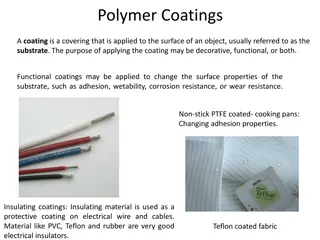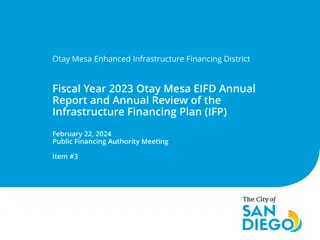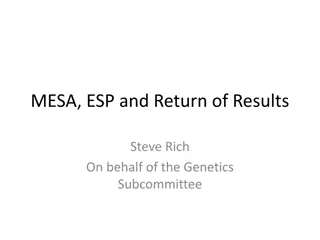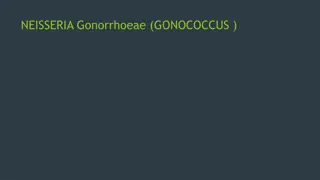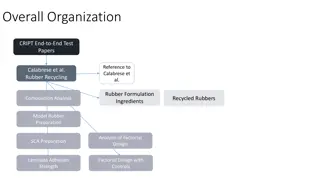MESA Adhesion Study Overview
This text delves into the MESA Adhesion study covering research team roles, study goals, population details, proteins examined, and sample sizes. The study aims to explore the association between the cellular adhesion pathway and atherosclerosis by analyzing variants in adhesion genes and protein levels. It provides an insight into the scientific aspects and data of the MESA project.
Download Presentation

Please find below an Image/Link to download the presentation.
The content on the website is provided AS IS for your information and personal use only. It may not be sold, licensed, or shared on other websites without obtaining consent from the author.If you encounter any issues during the download, it is possible that the publisher has removed the file from their server.
You are allowed to download the files provided on this website for personal or commercial use, subject to the condition that they are used lawfully. All files are the property of their respective owners.
The content on the website is provided AS IS for your information and personal use only. It may not be sold, licensed, or shared on other websites without obtaining consent from the author.
E N D
Presentation Transcript
MESA Adhesion Ancillary Study Results MESA Adhesion Ancillary Study Suzette J. Bielinski, PHD MESA Steering Committee Meeting Washington DC February 6, 2014 1
MESA Adhesion Research Team Site Name Role Suzette J. Bielinski, PhD Mariza de Andrade, PhD Paul A. Decker, MS Phil Kirsch, MPH Hughes Sicotte, PhD Nicholas B. Larson, PhD Cecilia Berardi, MD Michael Tsai, MD Principal Investigator Statistician Statistician Statistical Programmer Bioinformatician Research Associate Post-doctoral Fellow MESA Core Lab Mayo Clinic, Rochester Naomi Hanson, MS James S. Pankow, PhD Weihong Tang, PhD Michele Sale, PhD Christina Wassel, PhD MESA Core Lab Co-Investigator Co-Investigator MESA Genotype Lab Co-Investigator University of Minnesota University of Virginia University of Pittsburgh 2
MESA Adhesion Study Goals To test the hypothesis that the cellular adhesion pathway is associated with atherosclerosis variants in adhesion genes account for a significant portion of the variation in adhesion protein level and that these variants are associated atherosclerosis Exploring Models Individual protein levels Composite protein score and multi-protein models Pathways 3
MESA Adhesion Study Population Exam 2 Sample Availability on the 2880 Subset Serum, n = 2403 Plasma, n = 2536
MESA Adhesion Proteins at Exam 2 on the 2880 Random Sample P-selectin SDF1a TGFb1 RANTES VCAM-1 ICAM-1 L-selectin E-Cadherin *MMP-1 MMP-2 TIMP-2 6Ckine SLPI IL2sr HGF Exam 2 Sample Availability Serum, n = 2403 Plasma, n = 2536 5
Sample size with serum adhesion proteins measured ( n = 2403) Race/Ethnicity Non- Hispanic white 720 620 295 Chinese American African American Hispanic American Measure Exam Target Sample - MESA 2880 1 1 2 3 4 5 1 2 3 4 5 1 2 3 4 5 720 600 720 579 720 604 282 276 293 Coronary Artery Calcium Score (CAC) 270 278 249 255 220 360 608 113 317 598 165 326 560 165 333 587 283 288 268 274 260 277 233 Carotid Ultrasound (IMT) 257 184 375 616 111 367 596 145 334 575 143 324 597 548 550 512 523 ABI 445 58 433 29 403 44 415 59 Post -exam 2 CVD events FU11
Replication Protein Measures P-Selectin Exam 2 remaining cohort (n = 3437) HGF Exam 1 full cohort (n = 6814) Additional replication measurements TBD 7
P-selectin Background Enhances procoagulant activity and activates leukocyte integrins Plasma p-selectin inconsistently associated with CVD Race/ethnic specific functional SNPs (e.g. rs6136) Predominantly white populations MESA is ideal venue to investigate 8
Preliminary Data - Risk Factor Results n = 2536 Plasma P-selectin varied by race and higher in men Positively associated with WHR and triglycerides Significant race/ethnic interaction P-selectin and HDL Higher levels in diabetic hypertensives compared to normal 9
Preliminary Protein Results P-Selectin and Atherosclerosis Association of Plasma P-Selectin and Coronary Artery Calcium and Incident Coronary Heart Disease Per Standard Deviation of for the Population (9.3 mg/mL). Non-Hispanic white Subclinical Disease Beta (S.E.) Chinese American Beta (S.E.) African American Beta (S.E.) Hispanic American Beta (S.E.) P-value P-value P-value P-value CAC, Agatston Score Model 1 119.9 (42.9) 0.005 28.7 (36.6) 0.43 85.8 (50.5) 0.089 59.4 (39.2) 0.13 Model 2 121.7 (44.9) 0.007 -1.0 (37.6) 0.98 40.3 (57.2) 0.46 45.2 (39.9) 0.26 Clinical Disease HR (CI) HR (CI) HR (CI) HR (CI) Time to CHD Model 1 1.61 (1.23, 2.11) <0.001 1.43 (0.92, 2.23) 0.12 1.44 (0.97, 2.11) 0.068 1.23 (0.92, 1.65) 0.17 Model 2 1.56 (1.18, 2.06) 0.002 1.32 (0.80, 2.17) 0.28 1.39 (0.92, 2.10) 0.12 1.18 (0.85, 1.66) 0.32 Model 1 = age and sex Model 2 = age, sex, BMI, smoking and alcohol use status, LDL and HDL cholesterol, triglycerides, hypertension and diabetes status 10
Preliminary Genetic Results P-Selectin African America SELP and OPRM1 Chinese American ATP2B4, CISH, ABO Non-Hispanic white SELP, ABO, DIABLO Hispanic American KCNH8, WDR41, HOXA10, ABO 11
Investigating ABO Genotyping Identified 12 SNV s crucial for ABO typing (3 are indels) Imputation quality and MAF of the SNV appeared good however MAF of the imputed indel for the O allele was 10% off 20% of EUR samples had no match to known ABO haplotype (perhaps due to compounded multiple imputation error) ABO blood groups frequency did not match expected 14
Future Directions P-selectin analyses with full MESA cohort at exam 2 Genotyping SNPs in ABO Pathway Analyses 15
HGF Biology Regulates cell growth, promotes survival through anti-apoptotic effects, reduces fibrosis, and promotes angiogenesis Levels can be easily detected in circulation In cross-sectional studies, increased levels are associated with acute myocardial infarction heart failure and hypertension peripheral arterial disease A candidate for gene therapy in coronary heart disease and peripheral arterial disease 16
Preliminary HGF Results Association of subclinical and clinical cardiovascular disease per standard deviation of HGF Exam 2/3 Measurements Beta (S.E.) P-value CAC, Agatston Score 81 (18) <0.0001 IMT, mm -0.0003 (0.005) 0.95 Exam 3 Measurements *ABI -0.008 (0.003) 0.001 Clinical Events HR (CI) P-value Time to Coronary Heart Disease 1.4 (1.2, 1.6) <0.0001 Adjusted for age, sex, race/ethnicity, BMI, smoking status, LDL, HDL, triglycerides, hypertension, diabetes *Those with ABI > 1.3 were excluded from the analyses 17
HGF Race Specific Results Race/Ethnic Stratified associations of subclinical and clinical cardiovascular disease per standard deviation of HGF Non-Hispanic White Chinese American African American Hispanic American Beta (S.E.) P-value Beta (S.E.) P-value Beta (S.E.) P-value Beta (S.E.) P-value CAC, Exam 2/3 195 (36) <0.0001 98 (35) 0.005 -3.2 (47) 0.95 37 (31) 0.22 IMT, Exam 2/3 -0.004 (0.009) 0.68 0.002 (0.01) 0.84 0.001 (0.009) 0.92 -0.001 (0.0009) 0.93 *ABI, Exam 3 -0.009 (0.005) 0.06 -0.004 (0.005) 0.45 -0.015 (0.006) 0.009 -0.005 (0.005) 0.29 HR (CI) P-value HR (CI) P-value HR (CI) P-value HR (CI) P-value Time to CHD 1.4 (1.1, 1.9) 0.02 1.1 (0.7, 1.8) 0.70 1.5 (1.2, 2.0) 0.001 1.5 (1.1, 2.0) 0.009 18
Future Directions HGF analyses with full MESA cohort at exam 1 Genetic analyses 19
Questions Contact email Bielinski.suzette@mayo.edu 20
Mean and Standard Deviation of Circulating Adhesion Protein Level by Ethnicity in MESA measured at Exam 2 European Chinese African Hispanic p value n 619 600 579 603 VCAM-1, ng/mL 784 (225) 742 (227) 668 (223) 757 (238) < 0.001 P-selectin, ng/mL 58.1 (20.3) 42.6 (14.7) 45.7 (17.6) 60.6 (19.8) < 0.001 L-selectin, ng/mL 956 (215) 834 (175) 867 (192) 904 (196) < 0.001 E-Cadherin, ng/mL 215 (58.4) 227 (63.8) 209 (59.4) 247 (75.1) < 0.001 MMP-1, ng/mL 5.5 (4.0) 5.5 (3.6) 6.0 (4.9) 5.4 (4.3) 0.2769 MMP-2, ng/mL 196 (30.3) 190 (28.9) 201 (35.2) 198 (31.0) < 0.001 TIMP-2, ng/mL 83.0 (13.1) 76.9 (11.0) 82.8 (13.6) 81.9 (11.7) < 0.001 6Ckine, pg/mL 844 (280) 779 (281) 811 (289) 813 (280) < 0.001 RANTES, pg/mL 4195 (3969) 4385 (3317) 4334 (4611) 4284 (4287) < 0.001 SDF1a, pg/mL 1904 (434) 1998 (436) 1947 (481) 1942 (447) 0.002 HGF, pg/mL 1005 (254) 876 (200) 982 (265) 1099 (260) < 0.001 TGFb1, pg/mL 3708 (2162) 4385 (2225) 3908 (2513) 3855 (2250) < 0.001 SLPI, pg/mL 45525 (10058) 44977 (10250) 47677 (12241) 47439 (10626) < 0.001 ICAM-1, ng/mL 281 (63) 229 (54) 261 (101) 295 (87) <0.001 IL-2 Ra,pg/mL 864 (420) 601 (286) 651 (311) 794 (348) <0.001 21
ABO SNPs SNP Genotyped notes 261_262insG(Val87_Thr88=fs) INDEL, critical to distinguish O vs A or B rs8176719 N rs8176750 N INDEL, A secondary allele to distinguish A102 vs A2 rs56392308 N INDEL, critical to distinguish A102 vs A2 rs8176720 Y Thr99Thr rs1053878 Y Pro156Leu, SNP critical to distinguish A1 vs A102 or A2 rs7853989 Y Arg176Gly (in good LD with rs8176751) rs8176740 Y Phe216Ile rs8176741 Y His219His (in good LD with rs8176742 rs8176747) Pro227Pro, (in good LD with rs8176741 rs8176747) rs8176742 Y N rs8176751 c.*31G>A : non-coding, good LD with rs7853989 Gly268Ala (in good LD with rs8176741 rs8176747) rs8176747 Y rs8176746 Y Leu266Met 22





















